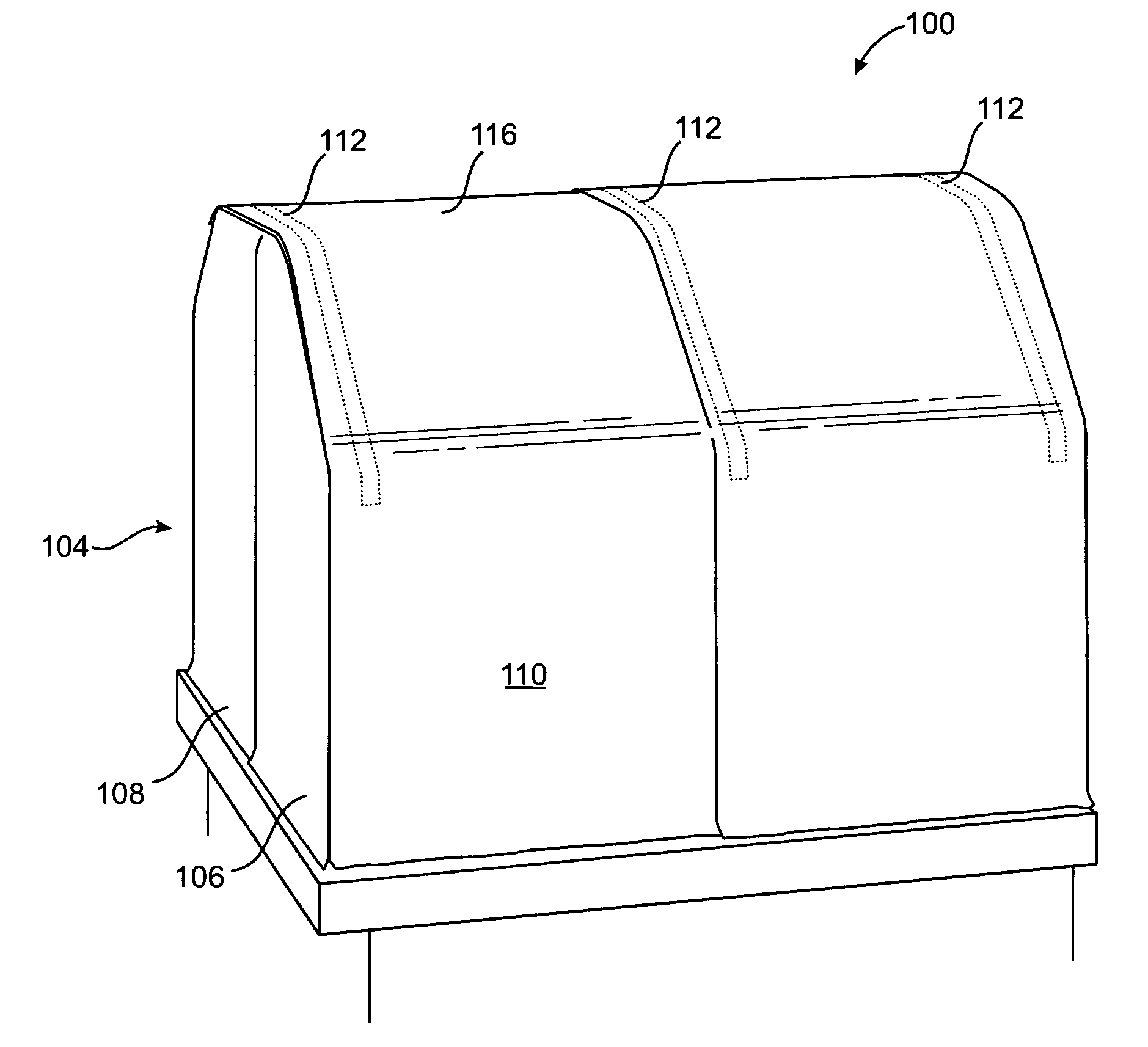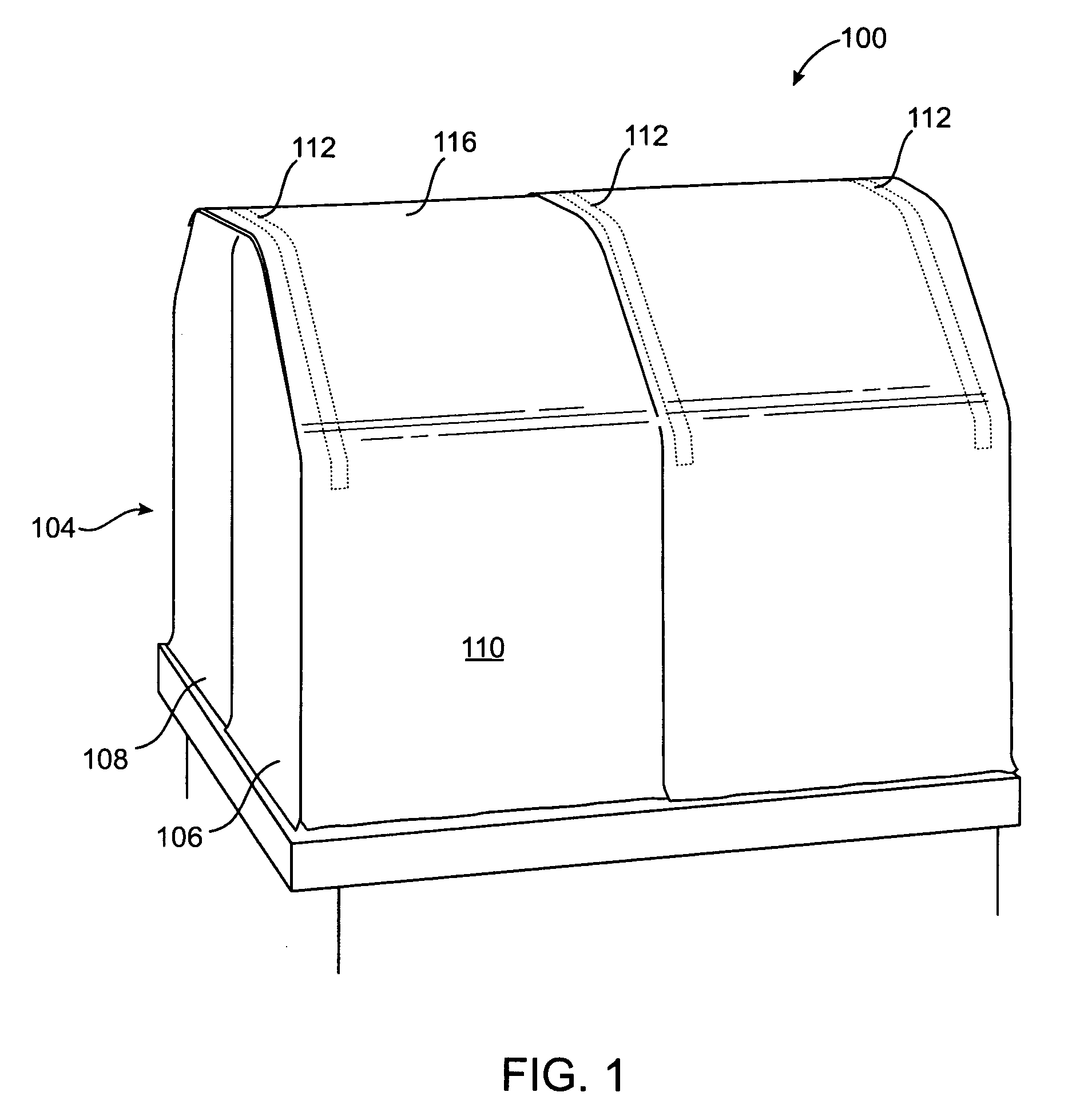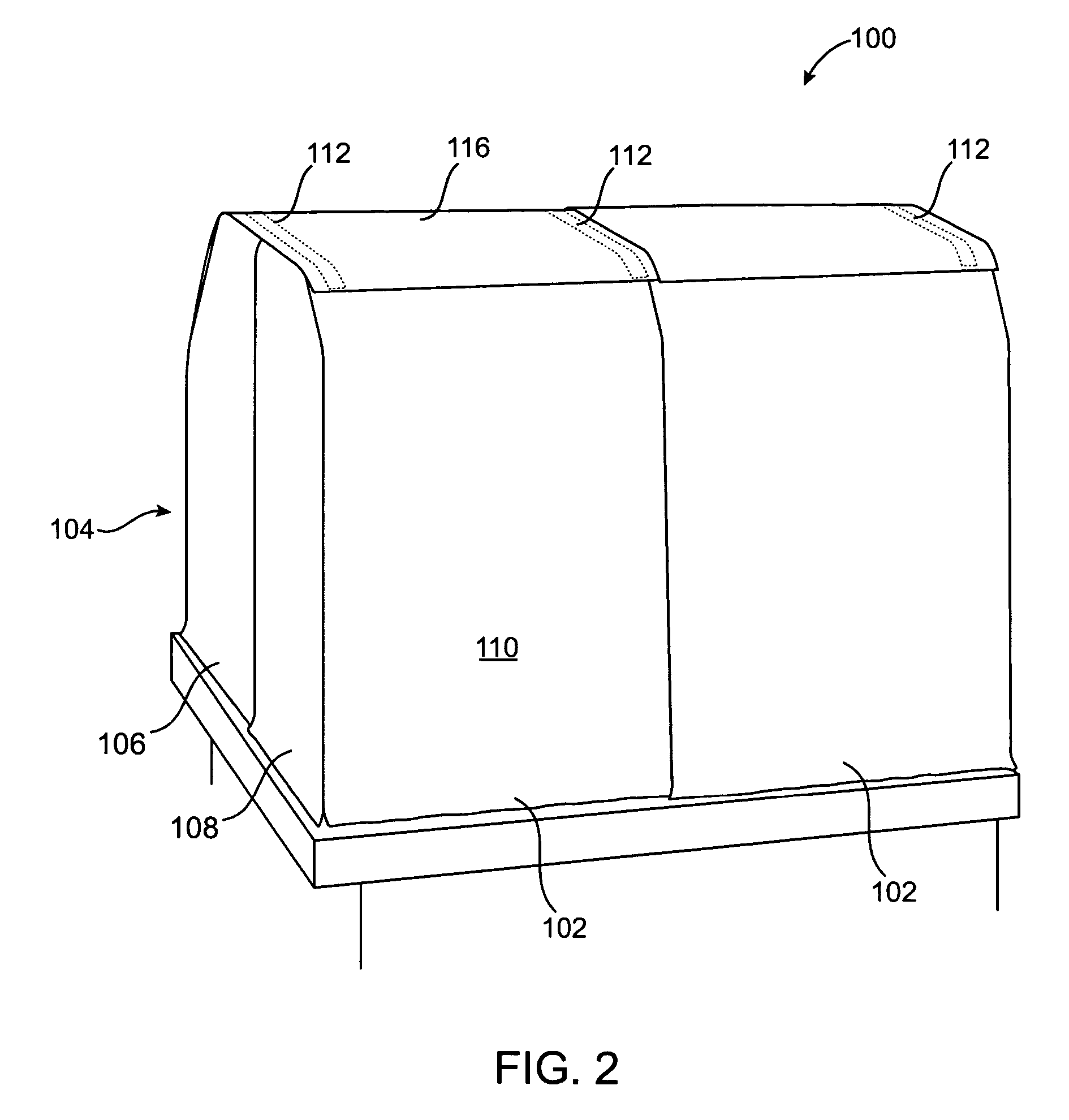Cover for infant incubator
a technology for incubator covers and incubators, applied in baby incubators, hospital equipment, medical science, etc., can solve the problems of difficult installation and removal of the cover, large volume, and unwieldiness of the cover,
- Summary
- Abstract
- Description
- Claims
- Application Information
AI Technical Summary
Benefits of technology
Problems solved by technology
Method used
Image
Examples
example 1
[0021] A first example of the incubator cover 100 is shown in FIGS. 1-3. The configuration shown is over an Ohmeda-Ohio Care Plus Incubator 10 manufactured by Ohmeda Medical. The back flap 102 of the incubator cover 100 is approximately 20 inches tall. Two panels form the back flap 102. Each of the two back panels is approximately 17 inches wide. Each of the sides panels 104 of the incubator cover 100 is formed of two panels 106, 108. The front side panel 106 is approximately 22 inches tall and approximately 10.5 inches wide. The rear side panel 108 is approximately 22 inches tall and approximately 11.5 inches wide. Both the front and rear side panels 106, 108 are rounded and shaped to conform to the general shape of the incubator 10. The front panel 110 of the incubator cover 100 is also formed of two panels. Each of the front panels is approximately 34 inches long and 17 inches wide.
[0022] Bands or straps 112 may be added that extend across the access opening 114. In Example 1, t...
example 2
[0025] A second example of the incubator cover 150 is shown in FIGS. 4-6. The configuration shown is over a Versalet 7700 Care Center, Model #7700 incubator 10 manufactured by Hill-Rom Air-Shields. In this embodiment, the sides 152 of the incubator cover 150 are approximately 18 inches tall and generally trapezoidal in shape. The base of the side panel 152 is approximately 10.5 inches wide. The front panel 154 of the incubator cover 150 is approximately 34 inches wide and 10.5 inches tall. The cover panel 156, which covers the access opening 162, is approximately 34 inches wide and 14 inches down the inclined top surface of the incubator 10. One two-inch long strip of cloth tape 158 extends from each of the top of the side panel 152. Nine-inch long strips of cloth tape 160 extend from each side of the top of the front panel 154. The pairs of strips 158, 160 are connected together around a portion of the incubator 10 with hook and loop fastener, thereby holding the incubator cover 15...
example 3
[0026] A third example of the incubator cover 200 is shown in FIGS. 7 and 8. The configuration shown is of a third model of infant incubator 10. In this embodiment, the incubator cover 200 takes the form of panels that connect together to wrap around the incubator to form a skirt 202. Along the top edge of the skirt are pleats, darts or other gatherings 204. This reduced diameter section can rest on the sloped sides of the incubator 10, thereby holding the incubator cover 200 in place. An optional partial top panel 206 may be temporarily or permanently added in situations where access to a portion of the incubator 10 is not needed. This leaves an elongated D-shaped opening that forms the access opening 208. In the embodiment shown, the access opening 208 is approximately 20 inches wide by 20 inches tall. The curved end of the D-shape access opening has a width of approximately 16 inches due to the pleats and darts. The skirt 202 of the incubator cover 200 is approximately 18 inches ...
PUM
 Login to View More
Login to View More Abstract
Description
Claims
Application Information
 Login to View More
Login to View More - R&D
- Intellectual Property
- Life Sciences
- Materials
- Tech Scout
- Unparalleled Data Quality
- Higher Quality Content
- 60% Fewer Hallucinations
Browse by: Latest US Patents, China's latest patents, Technical Efficacy Thesaurus, Application Domain, Technology Topic, Popular Technical Reports.
© 2025 PatSnap. All rights reserved.Legal|Privacy policy|Modern Slavery Act Transparency Statement|Sitemap|About US| Contact US: help@patsnap.com



